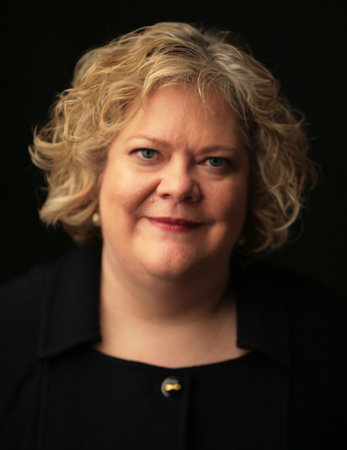Reynolds Director Micheline Maynard and co-host Mark Remillard of KTAR News in Phoenix offer tips on ways to find the money in any story, even if you aren’t a business journalist. The two discuss the importance of not letting numbers scare you from covering money stories. You don’t need advanced math skills to find out where the money is in any type of story, simple addition and subtraction will get you started. They give tips on speaking the “secret language” that is money and how to translate it for a wide audience, as well as the importance of never being afraid to ask “the good, dumb question.”
Transcript
[Intro Music]
Micki Maynard: How to Cover Money: Thinking like a business reporter even when you’re not one. Welcome to the Reynolds Center podcast. We’re coming to you from the Donald W. Reynolds National Center for Business Journalism. We’re based at the Walter Cronkite School of Journalism and Mass Communication at Arizona State University.
I’m Micki Maynard, Director of the Reynolds Center, and with me is my co-host Mark Remillard. He’s a Cronkite Alum and a reporter and anchor with KTAR News in Phoenix. Hello Mark!
Mark Remillard: Hi Micki!
Maynard: Today we bring you Series 1, Episode, 1: Thinking like a business reporter, even if you’re not one.
Remillard: Yeah, Micki, sooner or later, every journalist has to come across a story that involves money, and the important thing is not to panic, correct?
Maynard: That’s right. So many people are afraid of numbers. And what I try to teach my journalism students, and what we try to teach at the Reynolds Center is, don’t let numbers scare you.
Remillard: Yeah, I think it. You know, every journalist has to deal with them, whether they’re percentages, dollars or are, you know, square feet for a building. You know, no matter what, you have to deal with numbers.
Maynard: But, you know, the interesting thing about numbers is that we deal with numbers in our daily lives, and we’re not talking about anything fancy here. We’re not talking about algebra, we’re not talking about calculus, nothing that you’re going to have to worry about for the Nobel Prize.
Remillard: Yeah, I think the numbers are really the meat of the story. Obviously, that’s the thing that you need to focus on. That kind of gives you, keeps it away from he said, she said. It gives you facts and power behind your story.
Maynard: Correct.
Remillard: So what makes a good money story here?
Maynard: Well, money. One of the interesting things that you learn as a business reporter is that the money angle draws a lot of attention. The money angle is the integrity of a business story. It’s something that you have to learn to look for in every part of journalism, so that, I actually have my students play a game, you know, show me the money. Tell me where the money angle is in this restaurant story. Where is it in this real estate story? Where is it in a story about professional sports?
Remillard: I think a lot of people might get nervous about math, obviously, when it comes to this kind of things. But as you said, it can be pretty simple actually to deal with with money in a story.
Maynard: That’s right, it’s really just addition, subtraction, division, and multiplication. So if you think about addition: Joe Schmo, who owned a yogurt store, decides that he’s going to open two more yogurt stores, that gives him three yogurt stores. So there’s an addition story. When you hear about a company laying people off, Hewlett Packard cuts 5000 jobs, that’s a subtraction story. When you talk about multiplication or division, I think people can think of other examples in that, but boil it down to what’s easy for your brain to get around.
Remillard: I think if you were to actually deal with anything more complicated than that, that’s where you would kind of rely on on a source or an expert or someone to explain that to you.
Maynard: Right. That’s the most important thing about business reporting is that it isn’t just your work. You have to find experts who can explain it as well.
Remillard: As I’ve heard you talk about before, when you learn to deal with money, you’re, you’re kind of learning another language. It’s kind of like a secret language. Can you explain that?
Maynard: Right. I always call money the secret language, like learning French or Spanish or Japanese. You know, there’s whole world of people in in the United States and around the world that deal with money issues. So you’ve got bankers, you’ve got people in real estate, you’ve got people who run corporations. When they find out that you understand what they’re talking about, it’s as if they were speaking French, and now you’re speaking French. It’s the secret language, and it does have to be learned. You do have to have a little econ background, or take a business journalism class, or go to the Reynolds website, where we have all kinds of self-training available. You do have to do your homework, but once you do your homework, you learn that language, and all of a sudden you can speak to all kinds of people.
Remillard: Yeah, and does that also help come across with showing your interest in something? And you know what I mean, kind of showing that, “hey, I’m not just, this is not just a story that I was handed to and now I’m here.” You know, this is something that I’m interested in.
Maynard: You know, time and time again throughout my career, I’ve had business officials tell me, you know, you really did your homework. I felt like I was talking to someone who worked at this company, and that’s the important thing. You want them to forget that you’re a reporter and what you really want them to do is think that you work with them, that you’re a colleague in their real estate firm, that you’re someone who’s working for the big factory. Get on their terms, find out their terms, and once you do, you’re going to have a much easier time doing business stories.
Remillard: When you can raise yourself up to their level and to kind of understand their language, though, talk about now the process actually going down. Remembering that you’re essentially talking to a wide audience of people from all kinds of sophistication level when it comes to these kinds of issues.
Maynard: Right. So one of the big challenges in covering business or writing about money is that we have an audience that’s made up of all levels of sophistication. You might be having a CEO read your story or hear your story on the air. You might have your grandmother hear your story on the air, and you want to make sure that both the CEO and the grandmother can understand what you’re talking about. I took some training at National Public Radio from David Kandow, and David said, put a picture up in the studio of the person that you’re talking to, and then explain it so that that person in the picture can understand it. I would do that if I were a print reporter. I would do that if I were on the air, I would do that if I was writing for the web. Have a picture of your mom or your girlfriend or your boyfriend or just a buddy next to your computer. And if you find yourself using language that you don’t think they would understand, go back through it, simplify it a little bit, you’ll be doing your audience a big favor.
Remillard: Yeah, that’s kind of the job of any story, of any reporter is to essentially, whether it’s politics or business, you have to cut through that, that jargon. You have to be able to explain that so that people can understand it on a very fundamental basis.
Maynard: It’s okay to use the jargon as long as you explain it to people. If you are writing about Ebola and the economy, it helps if you explain the Ebola virus. You want to make sure that people are coming along with you on the journey as you explain the story, not that you lose them on the corner because you’ve crossed the street and you haven’t brought them with you.
Remillard: People who are covering business might have a hard time because, you know, they might not be at that sophistication level that we’re talking about, where you’re at the level of dealing with the CEO who’s running a company. So it’s really important that, as a reporter, that you understand the concept yourself.
Maynard: That’s right. I tell people all the time, you can’t fake it. You have to do your research. I had a student here at Cronkite who wrote a story, brought it to me and said, “Professor Maynard, I don’t really understand what I wrote.” And I said, “back to the drawing board.” You have to understand it in order for people to understand it from you. And I think fundamentally, especially as a business reporter, you need to respect your audience, and you have to understand that not everyone is following it as much as you are. So make sure that you do your homework, make sure that you’ve explained it properly, and make sure that if anyone asks you a question about it, like one of your editors, you’re able to explain to them what you’re talking about.
Remillard: Yeah, I see that in radio a lot. Because sometimes you have to go live on the air, and you might not have notes or something that you’ve had prepared. And so you’re, you have to know the story like the back of your hand to be able to know off the top of your head what it is, and to be able to explain it. And if you don’t have that you’re gonna stumble, you’re gonna have a hard time.
Maynard: Absolutely, and as someone who listens to radio and watches a lot of TV news, I can tell when they’re tap dancing. I can tell when they don’t have facts in front of them or in their heads, so it’s pretty visible to the audience, so don’t be that person.
Remillard: Yeah. And so when it comes to not faking it and bringing yourself at least up to the level that you can understand it, a lot of people might be afraid of asking “the dumb question.”
Maynard: Right. Well, I had an editor at The New York Times, Adam Bryant, who said, “Never be afraid to ask the good, dumb question.” And if there’s any one tip that I would give people who cover money, I would say, be ready to ask it. It doesn’t mean that you’re stupid. It means that you’re not getting the point, and it makes the person you’re interviewing explain it. It’s very possible that that person lives in a world where you just assume everyone has the knowledge, but you don’t live in that world, and your audience doesn’t live in that world. So never be afraid to ask the good, dumb question. Don’t be dumb yourself. Just take the information and build off of that.
Remillard: That’s it for Series 1, Episode 1 of How to Cover Money. Next time, we’ll teach you ways to keep your editors happy.
Maynard: Support for our podcast comes from the Donald W Reynolds National Center for Business Journalism. Visit our website at businessjournalism.org. You can find us on Twitter @bizjournalism. You can also look us up on Facebook, LinkedIn and Tumblr. I’m Micki Maynard. Now start thinking like a business reporter.
[Outro Music]



